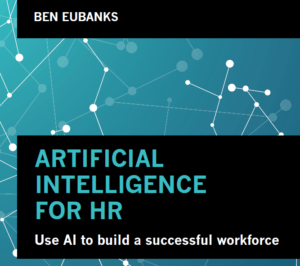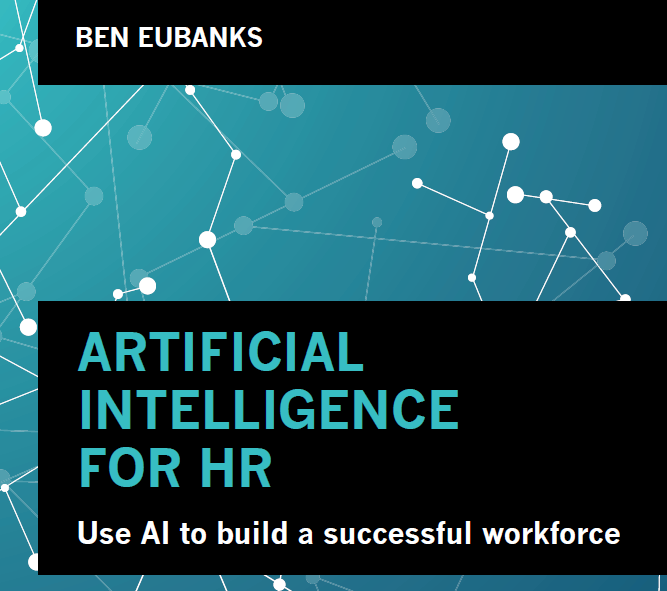 Below is a short excerpt from the book I’m working on that will highlight the impact of AI on the HR profession. My goal is to focus heavily on use cases that matter to today’s HR and business executives, and one of those that’s particularly intriguing is sentiment analysis.
Below is a short excerpt from the book I’m working on that will highlight the impact of AI on the HR profession. My goal is to focus heavily on use cases that matter to today’s HR and business executives, and one of those that’s particularly intriguing is sentiment analysis.
Language is the fundamental currency for how people express themselves.
We use language in our personal and professional lives daily. In reality, we’re telling an ongoing story that encapsulates our lives, but there’s also value in the data for companies that need to understand what’s going on under the surface. The process of mining this data for insights is called sentiment analysis.
The concept behind sentiment analysis is pretty simple: analyze large amounts of text and categorize the data by sentiment, or attitude. The value of this activity is clear: by understanding the general mood for a population of employees, whether globally, by department, or by location, a company can better serve those workers and meet their needs.
This analysis is done by blending natural language processing with machine learning. Sentiment analysis relies on open, unstructured text from conversations, emails, and other types of text-based qualitative inputs. Additionally, machine learning is used to train the system on words to look for that might signify issues. If all workers in a specific function mention salary or working hours in their communications or survey responses, then the systems can flag those areas for review by an HR representative.
Using Email Data for Sentiment Analysis
One example of a sentiment analysis platform is provided by US-based Tigli Solutions. The tool analyzes email data to determine engagement, leadership, alignment, and more. It’s common for systems to look at engagement as a factor, but because Tigli plugs into the email server data, it can look more specifically at who is emailing whom, whether they are having personal or work-focused conversations, and more.
While the system is anonymous and does not identify users directly, it can derive sentiments down to the departmental level, giving employers the opportunity to address issues and hot spots before they become a major problem. Instead of trying to push “collaboration” in general from an organizational perspective, the flow of email data from one person or team to another can give a true picture of whether collaboration is occurring and to what degree.
Extrapolating Intent from Comments (or “How to Understand What People Really Mean”)
Ultimate Software’s Xander AI is similar in its approach. The firm is doing its best to blend analytical intelligence with emotional intelligence to get a fully accurate picture of what is going on in the organization. The analysis then powers predictions, custom recommendations, and more. Instead of focusing on email data, Xander picks up other qualitative inputs from performance review comments, social commentary on the company intranet, and employee survey feedback.
The machine learning has been trained to the point where it can understand general sentiment by extrapolating the user’s mood from the text. For example, if someone types, “The internet connection is too slow at the office,” the system intuitively knows this is a negative issue. Alternatively, if someone types, “I have a great team,” the system will associate this with positive feelings. While it is easy to look at these examples and understand the intent from a human perspective, it’s not as easy for machines to navigate the nuances of language, and that doesn’t even involve the effort and challenge required for performing this analysis tens of thousands of times.
Using Employee Feedback to Uncover Powerful Insights
A final example comes from employee feedback platform CultureAmp. A certified B Corporation, the Melbourne-based software provider’s goal is to help employers capture and act on employee feedback. Head of Industry and Public Relations for CultureAmp, Damon Klotz, told me, “Many companies have traditionally given employees the illusion of listening. Instead of really listening to what needed to be done and then fixing it, they would collect survey data and then sit on it, often letting the problems go unchecked over time.”
For the last few years since its inception, the company has focused very heavily on the survey design and feedback collection processes, it now has a text analysis tool that offers employers insights into employee sentiment. Unlike some text analysis tools that are trained using a wide variety of unstructured data sets, CultureAmp feels like its tool is better suited for employer purposes because the machine learning algorithms were developed using thousands of employee feedback comments gathered during the first few years of the company’s existence.
Interested in being notified when the book is published later this year? Make sure you sign up for email updates and you’ll be the first to know!

Ben Eubanks is the Chief Research Officer at Lighthouse Research & Advisory. He is an author, speaker, and researcher with a passion for telling stories and making complex topics easy to understand.
His latest book Talent Scarcity answers the question every business leader has asked in recent years: “Where are all the people, and how do we get them back to work?” It shares practical and strategic recruiting and retention ideas and case studies for every employer.
His first book, Artificial Intelligence for HR, is the world’s most-cited resource on AI applications for hiring, development, and employee experience.
Ben has more than 10 years of experience both as an HR/recruiting executive as well as a researcher on workplace topics. His work is practical, relevant, and valued by practitioners from F100 firms to SMB organizations across the globe.
He has spoken to tens of thousands of HR professionals across the globe and enjoys sharing about technology, talent practices, and more. His speaking credits include the SHRM Annual Conference, Seminarium International, PeopleMatters Dubai and India, and over 100 other notable events.

